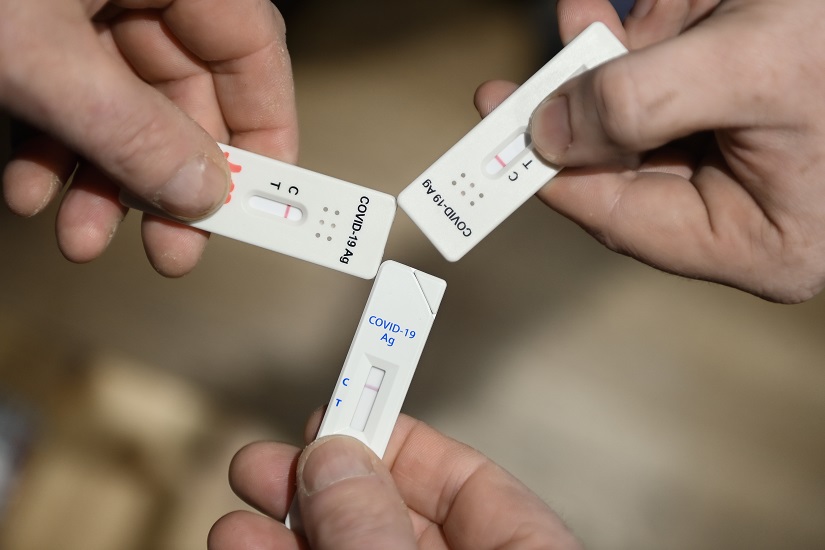Following a relatively quiet Covid period with a gentle decline in the number of infections and hospitalisations, the emergence of the "twin" Omicron BA.4 and BA.5 subvariants is causing figures to go up again around the world.
Experts have stated that a new summer Covid wave has started, although they expect the rise in infections to be "a hill, not a mountain."
When the Omicron variant emerged last November, it seemed to appear out of nowhere: it was not a mutation from any of the Variants Of Concern (VOC), such as those that were first detected in the UK, South Africa or India – meaning that it lacked some mutations that gave those other variants a clear advantage.
By continuing to mutate, however, BA.4 and BA.5 now also possess the L425R mutation that made the Delta variant circulate much faster. This has resulted in two sub-variants with an unprecedented ability to (re)infect humans, according to Guido Vanham, emeritus professor of virology at the Institute of Tropical Medicine (ITG).
"It is clear that these subvariants are the champions of transmission," he told De Standaard, explaining that the BA.4 and BA.5 sub-variants evolved from BA.2, which already was highly transmissible. "They only have a few additional mutations but those obviously make a big difference."
An advantage, not a handicap
Every coronavirus has spike proteins, which allow them to penetrate human cells. The spike looks different for each variant but when researchers examined the BA.4 and BA.5 mutations, the rare F486V mutation stood out.
This mutation is striking because it is usually considered a "handicap" that makes it harder for the virus to bind to human cells. In this case, however, it has been very successful in infecting people as their immune systems do not recognise it as a threat quickly enough.
In practice, that means that the body's natural defences have a harder time dealing with this "lesser" mutation, making it better at circumventing immunity and replicating more quickly. "In this case, this handicap really is a feature, not a bug for the virus," Vanham said.
Related News
- 'A hill, not a mountain': Summer Covid-19 wave on its way
- More than 100 Covid-19 hospitalisations per day, deaths still declining
- New Omicron sub-variant now dominant in Belgium: What does this mean?
Vanham argues that the timing is right for new variants to emerge: "Most people have been vaccinated three times but in most cases, the last booster was six months ago. As a result, the amount of antibodies in the blood is lower."
This means BA.4 and BA.4 have a double advantage: they are already considerably better at circumventing vaccine-induced immunity and on top of that, immunity from vaccination is no longer fresh and therefore lower.
Limited natural immunity
While the number of cases has been increasing recently, the pressure on hospitals remains limited as the subvariant does not seem to make (most) people particularly ill. For this reason, health experts and authorities are not looking to tighten up measures again.
"It does not look as if this variant will flood hospitals again, but that does not say everything about its pathogenic nature," said Vanham. "If this was the first new coronavirus that mankind came into contact with, we would probably be in the same situation as in March 2020."
Despite the fact that at least 1.5 million people in Belgium have had a confirmed infection with the first BA.1 Omicron variant – and the real number is expected to be much higher – their natural immunity against BA.4 and BA.5 is limited, research shows.
"Neutralising antibodies are generated after a BA.1 infection, but they are not as widespread as you might expect," Ravindra Gupta, professor of virology (University of Cambridge), said in Nature journal.
Circumventing built-up immunity
Those who were recently infected (with BA.2) are slightly better protected. People who were infected in the second half of 2021 may be even better protected as they were likely infected with the Delta variant and those antibodies seemingly hold up better.
However, the updated vaccines currently in development are based on that BA.1 variant, raising the question of whether these will not already be out of date by the autumn; there is still a lot of room for SARS-CoV-2 to mutate and once again circumvent newly built up immunity, English researchers pointed out.
"Do not think that this virus cannot explore new avenues," Vanham said. "This is still a young virus and certainly not all possibilities have been exhausted... We have not yet seen the last of it."

